
We are pleased to announce that Monroe Robinson (shown above) is hosting Open Wire this Saturday. NB: He’s a time zone or three behind us – so you might have to wait for answers. But don’t wait to post your questions – we’ll still open things up by 8 a.m. EDT, and cut off comments at 5 p.m. EDT)
When I volunteered to be a part of Open Wire, I thought it would be interesting and fun to answer questions about Dick Proenneke, including aspects of his life not included in “The Handcrafted Life of Dick Proenneke.” But when Chris asked me to write a few lines about what I’m currently working on, I realized I had an opportunity to include your ideas in a conversation I am having with myself and others about using tropical hardwoods.
First, a quick life update: My wife, K. Schubeck, and I spend most of our hours during the summer caring for what lies beyond our house and my shop, planting and harvesting our garden, caring for the many flowers, flowering trees and shrubs, picking berries and fruit to freeze, juice or jam. I am trying to perfect the making of intensely flavored jams with little added sweeteners. With each passing year I find myself seeking to share life’s experiences with family, friends and community rather than working by myself.
In September, my friend, Lou Krukar, will visit from Washington to help me make four large dining tables from the most beautiful planks of old-growth redwood I brought out of the forest in the 1990s.
The planks are eight book-matched pieces that were part of a 21’ log that sunk in a local river between 1850 and 1875, when trees were felled with axes and pulled to the river bank with oxen. This log sank on its way to the Big River sawmill and was covered in mud until I pulled it free. The bottom 9’ of the log is wavy grained leaving 12’ of straight and clear redwood above. This will be a collaborative project. First we will crosscut the planks and bring them into my shop to dry under metal roofing. When Lou returns a few months later, we will work on the tables and he will take one home.

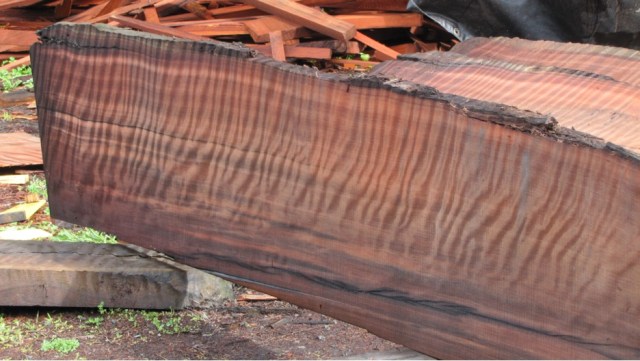
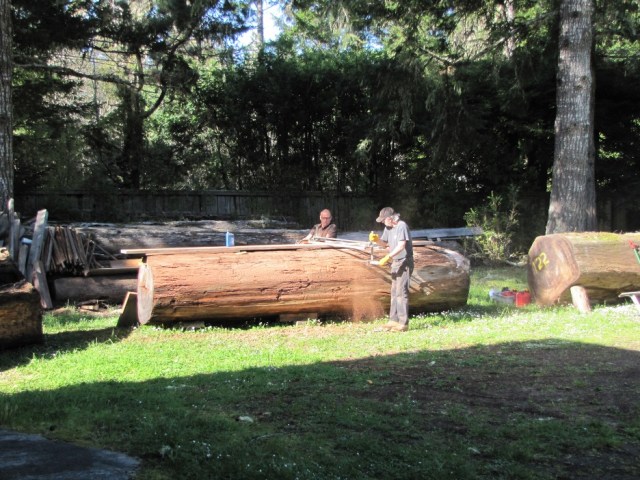
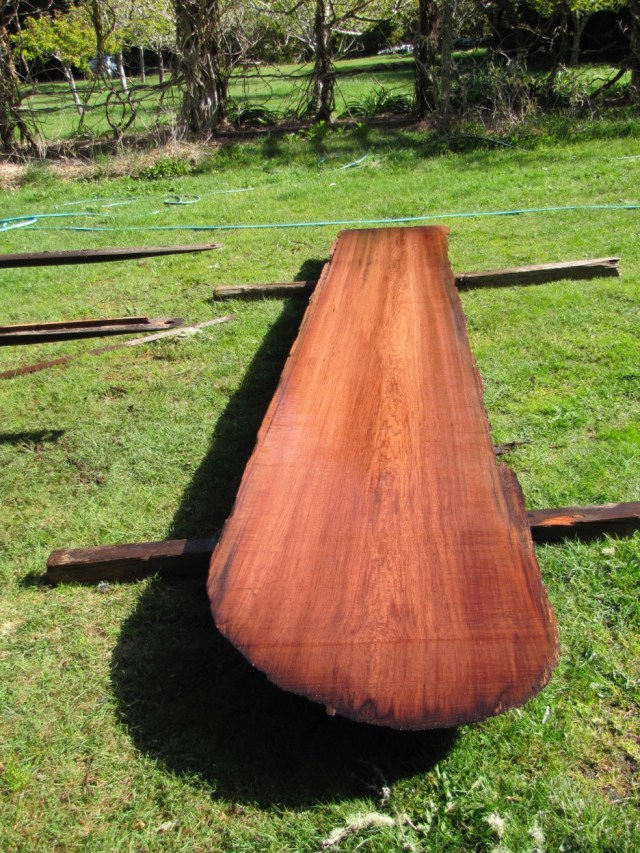
On the first day I removed a salvaged old-growth redwood log from the forest in 1992, my partner Roger Moore and I made a commitment that working in the forest would be give and take. I have no reservations of my having lived up to that commitment and am honored to still have many timbers from that dangerous yet special experience. But lately I have been trying to determine the best way to use up a few pieces of precious wood I purchased decades ago, from a place and in a manner that no longer fits with my values. And I am certain I am not the sole craftsperson in this position.
While I attended The Krenov School during its third and fourth years, Jim Krenov spoke a few times about his use of fine woods from around the world. He thought of himself as a single person who used limited amounts of precious woods in the creation of sensitive furniture that honored the wood he used. At the time, I felt as if this interpretation opened the door for my own use of tropical woods. While in the program I made a China hutch from Honduras rosewood (pictured in the introduction of my book) along with a shop-sawn veneered 58” circular dining table with four 12” leaves to match. The two pieces were in the student show at the end of my second year and resulted in my building a similar table for a client. When working up a proposal, I ended up purchasing some wood samples, including cocobolo, Thai rosewood, Andaman padauk and ebony. The client commissioned a 58” circular ebony dining table with eight 13” leaves, 18 folding ebony chairs with hand-caned seats and backs, and a 9’ buffet table that cantilevered from their adobe wall.

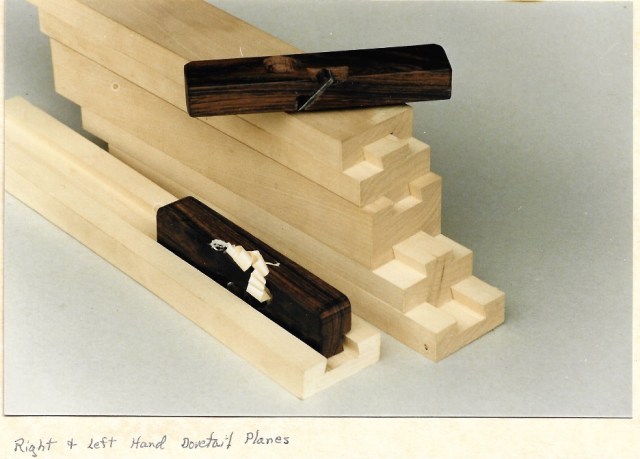
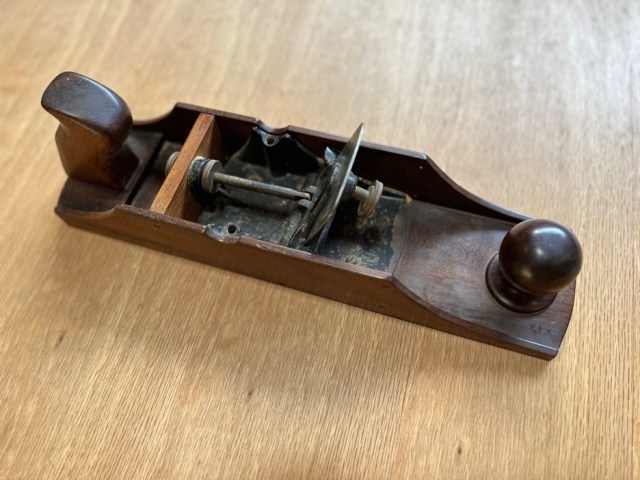
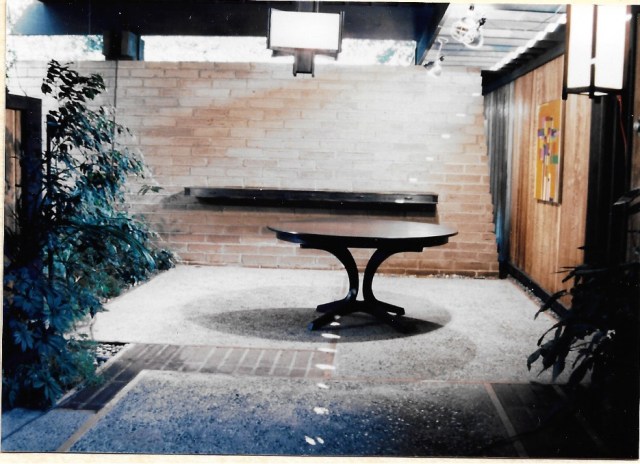
When I built the ebony dining set, I was also writing articles for Fine Woodworking and teaching a few gigs around the country. I realized I did not want to encourage the use of endangered hardwoods.
I came up with a plan: The retail cost of ebony cost accounted for 10 percent of the entire dining set. I decided I would be willing to build furniture with tropical hardwoods only if I added 10 percent more to the price, which I would then donate to a conservation organization close to the wood’s place of origin. However, future conversations about the impact of tropical wood extraction were enough to sway every client’s interest away from the use of such woods. As such, I have used only local woods for the past three-and-half decades.
That ebony from the Celebes Islands was the last tropical hardwood I purchased. But those samples? They still reside, untouched, on my lumber rack.
As a very young child, I could never understand how people killed almost every buffalo on the plains. What did that do to the people who depended upon them for survival? I wondered. I have maintained a commitment to never be a part of something like that. And yet, despite my convictions, I now find myself having been part of a tragedy of even greater magnitude for the world’s environment and possibly our own survival.
Creating surfaces from beautiful woods has always been what excites me most about working with fine wood. Everything I do beyond that supports the expression of that surface. I have enough of each of the sample woods I’ve mentioned to create a sizable buffet table. I plan to collaborate with a friend, Doug Carmichael, to make a wrought iron base for at least a table or two. Another friend, Tony Perelli, will make two candle holders and a set of hors d’oeuvre saucers to live with each table. Once my friends are compensated I plan to donate at least 50 percent of what remains of the selling price to conservation in the country of the wood’s origin.
Here are some of my questions: Is it possible to get a permit to sell a piece of rosewood furniture even though I no longer have the original invoice? I wish I had never purchased this wood, but I can’t undo what I’ve done. Making something beautiful, to be owned with reverence and knowing that the profit goes to conservation, is the best I can think to do. Any suggestions?
And now I look forward to answering your questions as well!
Finally, if you wish to keep in touch, my email is monroe@mcn.org.








